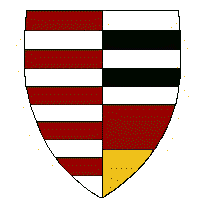History

| July 24th 1699 | 39 French huguenots settle south of Frankfurt. 30 of those settlers lend an oath of allegiance to Jean Philipp of Isenburg-Büdingen, the sovereign. In return they are granted his protection, permission to use their french language and freedom of religion | |
| 1700/1701 | The forester’s lodge (now the Restaurant "Frankfurter Haus") is build by the city of Frankfurt at the border to Neu-Isenburg | |
| 1702 | Construction of City Hall at the old market place and the first-time-mentioning of the "Haus zum Löwen", now housing the city museum | |
|
1702 Ascension Day |
Laying of the foundation stone for the first Protestant Church | |
| 1704 | The first school is established | |
| 1705 | Construction of the Bansamühle | |
| 1781-1783 | Construction of the first german school | |
| 1828 | Construction of the customs house (10 Frankfurter St.) as the main customs office of the Prussian-Hessian Customs Organization at the city border to the free city of Frankfurt | |
| 1846 | Construction of the Main-Neckar-Railroad-Line passing by Neu-Isenburg | |
| 1852 | Neu-Isenburg opens its own trainstation (by now, by the way, the only trainstation offering motorail train access in the area) | |
| 1865 | First postal bureau commences service in Neu-Isenburg | |
| 1889 | Opening of the trainroute Neu-Isenburg - Frankfurt (now still running as Streetcar #14) | |
| August 21st 1894 | The town charter is being awarded to Neu-Isenburg | |
| April 1896 | The first secondary school is opened in town (now called Goetheschule) | |
| 1899 | Neu-Isenburg is awarded its very own City Crest for its 200 year anniversary | |
| 1907 | Bertha Pappenheim founds the House of the Jewish Women’s Bond | |
| 1911 | Opening of the first Catholic Church St. Joseph | |
| 1926 | Opening of the Waldschwimmbad (public swimming pool) | |
| 1932 | The german Reichspost begins service at the new Post Office | |
| Nov. 10th1938 | During Crystal-Night the House of the Jewish Women’s Bond is being burned down | |
| Oct. 8th1955 | The foundation for the construction of the actual City Hall is being layed | |
| 1959 | Construction of Gravenbruch (hey, that’s where I grew up, folks) begins | |
| Jan. 1st 1977 | Zeppelinheim, until then an independent town, becomes part of Neu-Isenburg | |
| 1977 | Finishing and Opening of the public town house - The Hugenottenhalle, named after the founders of the city, the Huguenots | |
| 1988 | Opening of the new building of the Zeppelin-Museum |